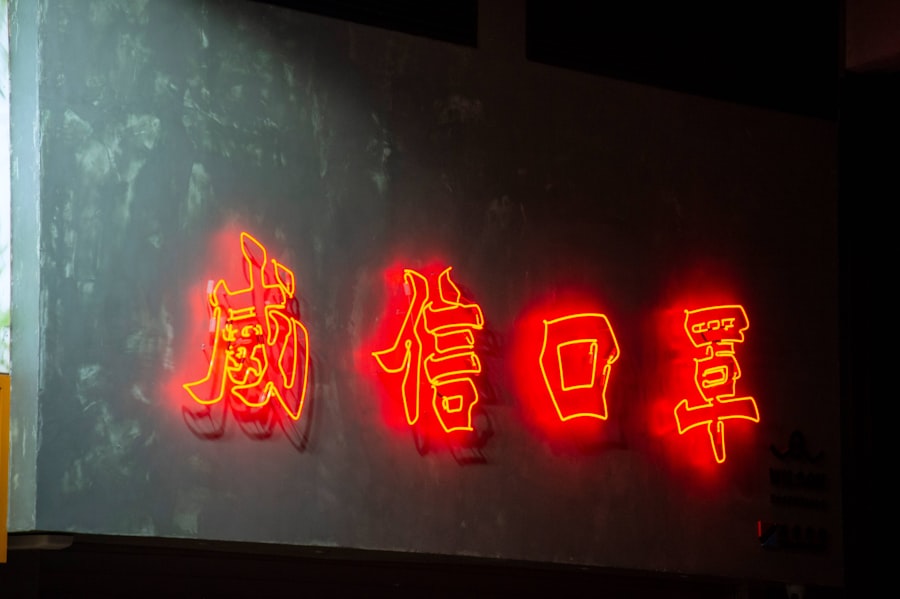The China-Taiwan conflict has deep historical roots that trace back to the end of the Chinese Civil War in 1949. Following years of strife between the Nationalist Party (Kuomintang) and the Communist Party of China, the Nationalists retreated to Taiwan after their defeat. This retreat marked the beginning of a complex relationship characterized by political, cultural, and ideological divides.
The Nationalists established a government in Taiwan, claiming to be the legitimate government of all of China, while the Communist Party solidified its control over the mainland. This division laid the groundwork for decades of tension, as both sides maintained their claims over the other. Over the years, the conflict has evolved, influenced by various factors including international politics and domestic developments.
The United States’ involvement during the Cold War further complicated matters, as it supported Taiwan as a bulwark against communism in Asia. The U.S. provided military and economic assistance to Taiwan, reinforcing its position as a separate entity from mainland China.
Meanwhile, the People’s Republic of China (PRC) has consistently viewed Taiwan as a breakaway province that must eventually be reunified with the mainland, a stance that has remained unchanged despite changing political landscapes.
Key Takeaways
- The historical roots of the China-Taiwan conflict date back to the Chinese Civil War and the establishment of the People’s Republic of China and the Republic of China on Taiwan.
- The current state of relations between China and Taiwan is characterized by political tensions, military posturing, and economic competition.
- The United States plays a significant role in the China-Taiwan conflict by providing military support to Taiwan and maintaining a policy of strategic ambiguity.
- The China-Taiwan conflict has economic implications, as both entities compete for international recognition, trade partnerships, and access to global markets.
- Military tensions and security concerns in the Taiwan Strait have escalated in recent years, raising fears of potential conflict and instability in the region.
The current state of relations between China and Taiwan
In recent years, relations between China and Taiwan have become increasingly strained. The election of Tsai Ing-wen in 2016 marked a significant shift in Taiwan’s political landscape, as she represents the Democratic Progressive Party (DPP), which advocates for a distinct Taiwanese identity separate from China. Under her leadership, Taiwan has sought to strengthen its international presence and assert its sovereignty, leading to heightened tensions with Beijing.
The PRC has responded with aggressive rhetoric and military posturing, viewing Taiwan’s moves toward independence as a direct challenge to its authority. Despite these tensions, there are still elements of economic interdependence between the two sides. Trade between China and Taiwan remains robust, with Taiwan being one of China’s largest trading partners.
However, this economic relationship is fraught with complexities, as political tensions often spill over into economic realms. The PRC has employed various tactics to isolate Taiwan diplomatically, including pressuring countries to sever official ties with Taipei and limiting Taiwan’s participation in international organizations. This ongoing struggle for recognition and legitimacy continues to shape the current state of relations between China and Taiwan.
The role of the United States in the China-Taiwan conflict

The United States plays a pivotal role in the China-Taiwan conflict, acting as a key ally for Taiwan while simultaneously navigating its complex relationship with China. The U.S. maintains a policy of “strategic ambiguity,” which aims to deter both Chinese aggression toward Taiwan and Taiwanese moves toward formal independence.
This approach has allowed the U.S. to provide military support to Taiwan without explicitly committing to defend it in the event of a conflict. The Taiwan Relations Act, enacted in 1979, underscores this commitment by ensuring that the U.S.
will supply Taiwan with defensive arms and maintain its capacity to resist coercion. In recent years, U.S.-Taiwan relations have strengthened significantly, particularly under the Biden administration. High-profile visits by U.S.
officials to Taiwan have signaled unwavering support for Taipei amid increasing Chinese assertiveness. Additionally, military cooperation has intensified, with joint exercises and arms sales aimed at bolstering Taiwan’s defense capabilities. However, this growing partnership has drawn sharp criticism from Beijing, which views U.S.
involvement as interference in its internal affairs and a threat to its sovereignty.
Economic implications of the China-Taiwan conflict
| Metrics | Data |
|---|---|
| Trade Volume | Billions of dollars |
| Foreign Direct Investment | Millions of dollars |
| GDP Growth | Percentage |
| Employment Rate | Percentage |
The economic implications of the China-Taiwan conflict are profound and multifaceted. Taiwan’s economy is heavily reliant on trade with China, making it vulnerable to shifts in political relations. As one of the world’s leading producers of semiconductors and electronic components, Taiwan plays a crucial role in global supply chains.
Any disruption in cross-strait relations could have far-reaching consequences not only for Taiwan but also for industries worldwide that depend on Taiwanese technology. Moreover, China’s increasing economic clout has allowed it to exert pressure on countries that maintain diplomatic relations with Taiwan. Many nations have opted to recognize Beijing over Taipei due to economic incentives offered by China, leading to a gradual diplomatic isolation of Taiwan.
This dynamic complicates Taiwan’s efforts to diversify its economic partnerships and seek new markets. As tensions escalate, businesses operating in or with ties to both sides must navigate an increasingly precarious landscape marked by uncertainty and potential disruption.
Military tensions and security concerns in the Taiwan Strait
The military tensions in the Taiwan Strait have escalated significantly in recent years, raising concerns about regional security and stability. The People’s Liberation Army (PLA) has ramped up its military activities near Taiwan, conducting frequent air and naval exercises that simulate potential invasion scenarios. These maneuvers serve as a demonstration of China’s military capabilities and resolve while simultaneously sending a clear message to Taipei and its allies about the consequences of pursuing independence.
Taiwan has responded by enhancing its own defense posture, investing in advanced military technology and seeking closer ties with the United States for security cooperation. The island’s military strategy emphasizes asymmetric warfare capabilities designed to deter a larger Chinese force. However, despite these efforts, there remains a significant power imbalance between the two sides, with China’s military modernization efforts outpacing those of Taiwan.
This disparity raises concerns about the potential for miscalculation or escalation should tensions continue to rise.
The impact of the China-Taiwan conflict on regional stability

The ongoing conflict between China and Taiwan poses significant challenges to regional stability in East Asia. As tensions escalate, neighboring countries are compelled to reassess their security strategies and diplomatic alignments. Nations such as Japan and South Korea closely monitor developments in the Taiwan Strait due to their geographical proximity and historical ties to both sides.
Any military confrontation could have dire consequences for regional security dynamics and could potentially draw in external powers like the United States. Furthermore, the conflict has implications for regional economic stability as well. Disruptions in trade routes or supply chains stemming from military hostilities could lead to economic fallout not only for China and Taiwan but also for countries reliant on trade with them.
The potential for conflict raises questions about how regional organizations like ASEAN can effectively address security concerns while balancing relationships with both Beijing and Taipei.
International responses to the China-Taiwan conflict
International responses to the China-Taiwan conflict have varied widely based on geopolitical interests and alliances. While some countries have expressed support for Taiwan’s right to self-determination, others have opted for a more cautious approach due to their economic ties with China. The United Nations remains largely silent on the issue due to China’s influence within the organization and its insistence on the “One China” policy, which asserts that there is only one sovereign state under the name China.
In contrast, countries like Japan and Australia have taken steps to strengthen their security partnerships with both the United States and Taiwan amid rising tensions. These nations recognize that stability in the Taiwan Strait is crucial for maintaining peace in the broader Indo-Pacific region.
The role of international organizations in addressing the China-Taiwan conflict
International organizations play a limited yet significant role in addressing the complexities of the China-Taiwan conflict. While organizations like the United Nations do not officially recognize Taiwan as a sovereign state due to pressure from Beijing, they still provide platforms for dialogue on issues such as public health and environmental concerns where cross-strait cooperation could be beneficial. However, these opportunities are often overshadowed by political tensions that inhibit meaningful engagement.
Regional organizations such as ASEAN have also grappled with how best to address the situation without alienating either side. While ASEAN emphasizes non-interference in member states’ internal affairs, it recognizes that stability in the Taiwan Strait is essential for regional peace. As such, ASEAN has sought to facilitate dialogue among member states while encouraging peaceful resolutions to disputes through diplomatic channels.
The potential for diplomatic resolutions to the China-Taiwan conflict
The potential for diplomatic resolutions to the China-Taiwan conflict remains uncertain but not entirely out of reach.
For any meaningful progress toward resolution, both Beijing and Taipei would need to demonstrate a willingness to compromise on key issues such as sovereignty and national identity.
Recent developments suggest that there may be opportunities for renewed dialogue under certain conditions. For instance, if economic cooperation can be prioritized over political differences, it may pave the way for more constructive engagement between both sides. Additionally, external pressures from international actors could encourage both parties to seek common ground rather than escalate tensions further.
The impact of the China-Taiwan conflict on global supply chains
The ramifications of the China-Taiwan conflict extend beyond regional borders, significantly impacting global supply chains that rely on Taiwanese technology and manufacturing capabilities. As one of the world’s leading producers of semiconductors—an essential component in countless electronic devices—Taiwan’s stability is critical for industries worldwide ranging from automotive to consumer electronics. Any disruption caused by military conflict or heightened tensions could lead to severe shortages and increased prices across various sectors globally.
Companies that depend on Taiwanese products may find themselves scrambling for alternatives or facing delays that could hinder production timelines. This interconnectedness underscores how local conflicts can reverberate through global markets, highlighting the need for international stakeholders to prioritize stability in cross-strait relations.
The future of the China-Taiwan conflict and its implications for the international community
Looking ahead, the future of the China-Taiwan conflict remains uncertain but fraught with potential consequences for both regional and global stability. As China’s assertiveness continues to grow alongside its military capabilities, it is likely that tensions will persist or even escalate if diplomatic avenues remain unexploited. The international community must remain vigilant in monitoring developments while advocating for peaceful resolutions that respect Taiwan’s democratic aspirations.
Ultimately, how this conflict unfolds will shape not only East Asian geopolitics but also broader international relations dynamics as countries navigate their interests amid competing pressures from both Beijing and Taipei. The stakes are high; thus, fostering dialogue and understanding will be essential in mitigating risks associated with this enduring conflict while promoting peace and stability across borders.
The ongoing China-Taiwan conflict has been a focal point of international relations, with tensions escalating over issues of sovereignty and territorial claims. A related article that delves into the geopolitical dynamics of this conflict can be found on MyGeoQuest. This article provides an in-depth analysis of the historical context and current developments in the region, offering insights into the strategic interests of both China and Taiwan. For more detailed information, you can read the article by visiting MyGeoQuest.
WATCH NOW! Unlocking Disaster: 7 Choke Points That Could Fracture Our Connected World Overnight
FAQs
What is the China Taiwan Conflict?
The China Taiwan Conflict refers to the ongoing political and military tension between the People’s Republic of China (PRC) and the Republic of China (ROC) over the sovereignty of Taiwan.
What is the historical background of the China Taiwan Conflict?
The conflict has its roots in the Chinese Civil War, which ended in 1949 with the Communist Party of China (CPC) establishing the PRC on the mainland, while the Kuomintang-led ROC government retreated to Taiwan.
What are the main issues in the China Taiwan Conflict?
The main issues revolve around the differing claims of sovereignty over Taiwan. The PRC considers Taiwan to be a part of its territory and seeks eventual reunification, while the ROC maintains its own government and sees itself as a separate sovereign state.
What are the current tensions in the China Taiwan Conflict?
Tensions have escalated in recent years due to increased military activities by the PRC in the vicinity of Taiwan, as well as diplomatic and economic pressure to isolate Taiwan internationally.
How does the international community view the China Taiwan Conflict?
The international community is divided in its recognition of Taiwan. While most countries officially recognize the PRC and adhere to the “One China” policy, some maintain unofficial relations with Taiwan and support its participation in international organizations.
